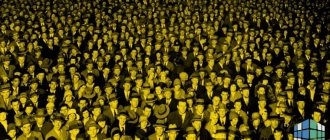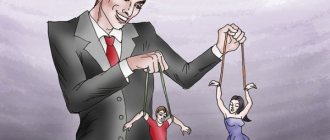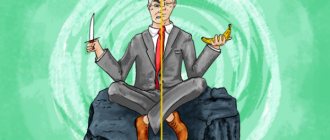Each of us is very familiar with the concept of a crowd. In simple terms, this is a large crowd of people. Chaotic, although not devoid of some organization, which arises due to a common object of attention, event, tradition, circumstances.
But this is not the only thing that unites people who find themselves in a crowd. They are united by emotions, a certain tension, and a general psychological state. This is a complex concept and phenomenon, so everything that concerns it is worth talking about in a little more detail.
general characteristics
Before moving on to the types of crowds, you should understand the definition. There are two options, and both are correct, it’s just that each of them fits a particular case. So the crowd is:
- An initially unorganized collection of people that does not have a common conscious goal.
- A collection of people that has lost its organization and has lost its common goal.
In both cases, everyone in the crowd is in a state of maximum emotional arousal. Such clusters are formed in conditions of natural disasters, which include man-made disasters, earthquakes, fires, and floods. Even during military exercises, mass spectacles, celebrations, protests (demonstrations, processions, rallies, strikes). There are also traffic crowds.
Their types are determined taking into account factors, which include the emotional arousal of people and the degree of activity they exhibit. And now we can move on to the typology.
Behavior patterns
Social phenomena manifest themselves in the masses. In addition to the differences, there are also common features. This is deindividuation - the partial disappearance of a person’s personal qualities, a state in which individuality is repressed under the influence of suggestions. There is a tendency to imitate. A person with this syndrome does not have a personal opinion or is afraid to express it. Follows the crowd, even if its interests do not correspond to his needs and moral values.
Another similarity is expressed in the sense of standardization. Because of this quality, a “herd instinct” develops. Aesthetic and legal norms are weakened. Gradually, a person loses his individuality and acts only according to the “rules” of the crowd.
Other general qualities.
- Feeling of your own strength. The sense of responsibility decreases. The participant does not always think ahead about the consequences when taking certain actions.
- Increased excitability in relation to one's own social feelings. The result is increased emotional impact. Each person in the crowd considers his point of view to be the only correct one, which can provoke a scandal. This is especially true for political or religious beliefs.
- Increased sense of persecution. Occurs when the participant realizes that he has done something wrong, illegal, etc. Manifests as a feeling of anxiety, which can later express itself as schizophrenia or a phobic disorder.
The crowd may disperse. This often happens under the influence of 2 factors. The first is the activation of the instinct of self-preservation or fear. It manifests itself in situations where a crowd is doused, an attempt is made to shoot at or destroy.
This often happens during rallies, when security services or representatives of other responsible institutions try to stop the angry crowd in any way.
Disconnection at will is the second factor. Possible reasons are hunger, prolonged exposure to the cold, late time of day. But after that, people usually gather again and continue to defend their interests.
Active crowd
Characterized by increased aggressiveness, a tendency to cruelty, violence, and destructive actions. Also considered active are the fleeing crowds, which easily turn into acquisitive and panicky ones.
This is a general definition. An active crowd is also considered to be any gathering of people that manifests itself in action. For example, football fans who riot after a match. The case of the White House defense in 1993 can also be considered indicative - then people gathered in an active crowd not to express their feelings or observe the event, but to take part in the action itself.
Acting crowd
This type is the most important in socio-political terms. Accordingly, of all types of crowds, it is the most deeply and closely studied. It is important to note that this type has so-called branches. It is divided into aggressive, panicky, acquisitive and rebellious crowds. The first two will be discussed separately, so now it is worth noting the other 2 types.
- Money-grubbing crowd. It is formed by people who are obsessed with the idea of regaining some valuables or obtaining them. Crowds of this type are extremely heterogeneous. They can be formed by pogromists, depositors of bankrupt banks, and looters. In any case, all participants fight for the possession of values.
- Rebellious crowd of people. It is also called rebel. If the crowd's actions are successful, it becomes “revolutionary.” Instead of success comes failure? Then the crowd ceases to be considered even rebellious. It becomes a “gathering of putschists” or a “random rabble.”
Control methods
Knowing different crowd control techniques, you can form the desired reaction to what is happening or set the necessary model of behavior. Using several techniques, you can turn one type of crowd into another. This is especially useful if the crowd is aggressive and you want to make it neutral.
The first way is insult on behalf of the enemy. Using this technique, you can quickly gain weight, raise your mood and morale. The following phrases may be used during the process:
- “They consider us fools and pay us a pittance salary”;
- “They steal money and think we don’t see anything”;
- “They don’t care about us, ordinary residents, that’s why medicine has become paid”;
- “They do not increase the level of living wage and think that this amount is enough for us to cover all our needs,” etc.
This method is often used by politicians in campaign programs. Another manifestation is the speeches of activists before a public of like-minded people with the goal of immediately changing the government and protecting their interests.
Another method is to use individual phrases of the enemy in a different context, i.e., directly distort them. This technique is usually used by journalists to ruin the reputation of a certain person. Often the victims are pop stars or politicians. The disadvantage of technology is that people trust the words of journalists more. Any remarks from the injured person trying to prove the opposite are perceived as a refutation. The result is a decrease in the level of trust in such a person. Other techniques.
- "Positive-negative." It is especially effective when the audience is already excited, scared, angry, and angry. The point: present information about the enemy that will show him from the negative side. Criticize his words and statements. By contrast, the leader speaker talks about what he would do in his opponent’s place. Often used in political rallies. It is implemented along the lines of: “They couldn’t raise pensions, but this won’t happen to me!” I will take into account the interests of the residents of our country!” After such statements, the crowd can be forced to take specific actions.
- Abstract statements. What the masses want to hear is voiced. They influence the consciousness of these people. Typically, such phrases use the words and phrases “freedom”, “tolerance”, “increase”, “wealth”, “new standard of living”. The crowd doesn’t care whose freedom they defend, what it is, what the new standard of living will be. This is because the speaker knows which words evoke positive associations in people and uses this to his advantage. As a result, it often happens that people reconvene or move on to action without fully understanding the goals.
- Constant repetition. In the process of communicating with a crowd, the speaker talks about the same thing, but in different words. Usually gives many examples to convince people of the correctness of his thoughts. Such constant repetition really influences a person, and he involuntarily begins to agree with the speaker.
- Use of quotations. Many people believe that someone who knows many different quotes is necessarily well educated and very smart. This statement is reinforced if the author of the quoted statement is an influential, famous person. But it is not always the case. Sometimes leaders use a secret example, thereby clouding people's minds - they attribute words to famous people that they themselves composed in order to increase their reputation in the eyes of the masses. Another option is to quote off-topic, but due to inadequate perception, people simply do not notice this.
Another technique is to play rhythmic music. Used to transform a mass from angry to calm. Neurophysiologists have proven that music with a pronounced rhythm can eliminate the aggressive mood of people.
This technique is often used in America to pacify crowds during demonstrations in front of parliament.
Other features of this technique:
- the rhythm of the music should be selected depending on the situation;
- if you need to pacify a riotous crowd, you need to choose a melody with a fast rhythm, which is clearly expressed and felt very accurately;
- in case of panic among the masses, you will need music with a slow, measured rhythm (this can be simple chants, marches, anthems), this allows you to turn fear into an expressive state.
Other methods include the threat of individual exposure. People are pointed out that they are filming with a hidden camera. They focus on the fact that it will later be shown on TV. It helps calm people down a little.
Additional items can be used to restore order in a crowd. This method is called shock therapy or attention switching. It could be a shot in the air from a gun, an unexpected order.
Another effective technique that helps eliminate panic in a crowd is a calming phrase. Often panic is formed due to a lack of information and lack of an action plan. Then you should provide people with possible options to get out of the situation. They must be real and possible to implement. Then the mass will calm down a little, the panic will disappear.
Some people in a crowd are very effectively influenced by the threat of criminal punishment. This will help disperse the mass.
A method used by marketers, businessmen, and entrepreneurs is hypnosis. Its essence is to put people into a trance state and implement the necessary actions using suggestion. It contains a specific command. The speaker gives all orders in an imperious, menacing voice in a raised voice.
After achieving a certain goal, the mass must be brought out of the trance. But this is done only by those who have achieved high skill in imposing hypnosis on a small group of people. Otherwise, such a person can expect failure and an angry, negative crowd.
Hypnosis is used to influence small crowds of people
Aggressive type
This type of crowd needs to be discussed separately. In an aggressive crowd, the level of emotional arousal, as well as external and internal activity, constantly increases. Mental stress gradually manifests itself, which is based on feelings of anger, despair, frustration, and misunderstanding. The crowd moves from an active state to an aggressive one due to the appearance of a so-called exciting stimulus. It is he who provokes the emergence of general indignation and indignation.
But the main thing that distinguishes an aggressive crowd is its destructive behavior. Crowds of people who are united by a feeling of fear, which is usually caused by danger to life, are divided into panic and those fleeing. Their behavior becomes destructive - the level of awareness of the actions being performed falls, the critical attitude to the situation disappears, and the experience of fear becomes more acute.
And panicked crowds are more dangerous than those fleeing. Because their behavior poses a greater threat to people. In a panicked crowd, the organization is completely lost, and its participants begin to behave unconsciously, mechanically, and inappropriately. They are completely consumed by fear. A fleeing crowd, which is more predictable, can be subordinated to the organization, since its participants retain the ability to regulate their behavior and be aware of what is happening for some time.
Basic recommendations
Being in a crowd can have a negative impact on a person's mental and physical health. Intellect and thinking are completely switched off when entering it. A person can do something that would never be repeated in a normal state. Neglects safety precautions, which leads to injury. Therefore, it is necessary to be able to protect yourself from exposure.
The main thing is to avoid the crowd. Often a person is not associated with the masses by any values. He can join only out of interest. But if a leader appears who knows how to control the masses, then the participant will be attracted by force. He will begin to fiercely defend the interests of the crowd, as a result of which he may suffer.
Below is how to behave if you get into a crowd.
- You need to behave calmly and not show aggression. Especially if the individual’s point of view is radically different from the community’s. Otherwise, from an ordinary passerby, he may become a victim of a huge number of often angry people. The best an individual can do in this situation is to pretend that he shares the values and ideas of the crowd. Then you need to try to smoothly and carefully leave the crowd.
- If the crowd begins to move, the task of a random participant in the procession is not to fall, to maintain balance. Otherwise he might be trampled. All clothes need to be tucked in, pockets zipped, things pressed tightly to you. If the situation has reached an extreme degree, it is better to get rid of unnecessary items. This will help save lives.
- If tear gas was used, quickly press anything against your face that is comfortable to breathe through. This could be a hood, scarf, scarf, hat. Be sure to close your eyes. Do not rub the skin around them. This will only make the situation worse. Try to get out of the crowd as quickly as possible and rinse your eyes with running water.
- If the police, national guard or other organizations are trying to pacify the crowd, try to get away from the epicenter of the events. If there is a wall nearby, move towards it. Do not resist law enforcement officers, behave calmly and with restraint. Otherwise, you may get injured or get shot. Screaming and calling for help is useless.
- Do not stand near the stage or other area where the speaker is speaking. This will make it difficult to get out of the crowd and make the space around you very limited and uncomfortable to stay in. Usually all events and fights begin near the stage or in the middle of the crowd. It is better to stay on the edge and try to quickly leave the scene.
- Avoid aggressive people. They may carry firearms or piercing objects. Usually they are in a state of alcohol or drug intoxication, i.e. they are not able to control their actions. Conflict situations with bad consequences often arise near such groups.
- Stick to the general flow rate. There is no need to try to go faster or push. This is especially important in panic situations when people are being evacuated. In case of a crush, bend your arms near your chest to protect yourself.
- When getting out of the crowd, do not get involved in verbal conflicts. Just silently leave the masses. It's better not to look at anyone. The behavior of aggressive people is unpredictable and always dangerous. You should also not respond to remarks addressed to you.
The main thing is not to lose your composure. Don't be manipulated. Behave naturally and try to keep your mind clear. As long as a person thinks, he is able to make the right decisions and save himself in a critical situation.
Expressive type
The name itself defines the characteristics of this type of crowd. Expression is a vivid manifestation of thoughts, moods and feelings. And also temperament. What is an expressive crowd? A group of people that rhythmically expresses a certain emotion. It could be anything - indignation, joy, anger, enthusiasm.
A striking example is people chanting a slogan at a rally. Or football fans, their entire crowd cheering for their favorite team. In some cases, the rhythmic expression of emotions takes on an intense form, resulting in the phenomenon of mass ecstasy.
In terms of characteristics and education, the expressive crowd of people is similar to the active one. Its participants also lose self-awareness, they also begin to come into contact with mindless and fast-acting responsiveness.
But there is a fundamental difference. The fact is that participants in an expressive crowd do not develop an image of a particular goal. Accordingly, suggestion does not lead to the creation of an action plan and its implementation directly. It can be expressed in simple language. An expressive crowd does not act - it simply succumbs to excited movements. In such cases, the external expression of feelings is an end in itself.
Basic theories
Theories can also be used to explain the behavior of people in a crowd. The main ones among them are the theories of mass communication, contagion, convergence, and the birth of norms.
Infection
The bottom line: the behavior of an individual depends on the behavior model of the entire crowd. Despite the character and characteristics of a person, among a large mass of people he can behave aggressively, because he relies not on his mind, but on instincts. This is how the herd instinct is formed.
The sense of responsibility disappears. In its place come intolerance and fanaticism. Possible worship of the leader, voiced thoughts and decisions that cannot be questioned. To control such a crowd, it is necessary to form a certain emotional mood in it and modify it to use it for the right purposes.
Convergence
It views the mass as a collection of people with similar thinking and ideas. They just found themselves in a similar situation and decided to act together.
Attention is paid to the individual characteristics of each participant. They are united by some common characteristics, which soon manifest themselves through different emotions: hatred, sadness, aggression, joy, optimism.
F. Allport's theory of convergence
Mass communications
Mass communications greatly influence the social, industrial, cultural and ideological spheres of human life. Affect the perception of information. With their help it is possible to carry out mass suggestion.
Mass communications directly influence the formation of values and consciousness through certain attitudes. Because of them, the phenomena of imitation are realized, certain ideals and trends are imposed.
The psychology of the masses was of interest to many scientists, but Richard Harris paid special attention to it. After conducting a lot of research in the field of mass communication, he identified some theories.
- Social learning theory. The essence: a person accepts the model of behavior that is imposed on him by society. He looks at those around him and begins to imitate them. The development of social learning is greatly influenced by the media. But to do this, they initially try to attract people's attention to themselves.
- Cultivation theory. The idea is that a person’s ideas about the real world are formed through the media. In this way, it is possible to impose different tendencies and certain reactions to events on people. This influences the choice of government and life path. Cultivation occurs when the real world and the one constructed by the media share many characteristics or are a reflection of each other. Otherwise, psychological dissonance is possible, which will negatively affect the participant’s behavior.
- Uses and gratifications theory. The media is not only a source of news and other information. This is a way to delve deeper into the world of fantasies and illusions. The media helps to join certain social groups. They can be real or imagined by the viewer. What effect a person gets from watching TV depends on his perception and needs.
- Agenda-setting theory. This is the ability of the media to change a person’s ideas about an event, to shape public attitudes to certain issues with the help of messages. According to one scientist, the media does not tell us how to act. They provide direction for thinking about an important issue and help form an overall assessment of what is happening.
- Cognitive or constructivist theory. The implication is that people do not simply encode information and reproduce it through the media. They assimilate received news, interpreting it with previously accumulated information. Particular attention is paid to the context in which a particular message was received.
Mass media plays an important role in crowd behavior
The birth of norms
In this theory, the gathering is viewed as a temporary phenomenon. People gather under the influence of inner emotions and unique character traits.
In the process of interaction, certain attitudes, norms, and rules gradually appear. They usually concern human behavior. A prerequisite is that the norms must be accepted by the entire mass. The rules must be followed.
Edits and adjustments cannot be made. This can cause a negative reaction from the masses and provoke a conflict situation.
Conventional crowd
It consists of people who gathered in a certain place at a specific time for a reason, but with a predetermined purpose. Examples of this phenomenon surround us everywhere. Take, for example, spectators of a theater performance, listeners of a symphony concert, or football fans.
The peculiarity of this type of cluster is that its participants comply with the rules and generally accepted norms governing their behavior. This makes the crowd predictable and orderly. You could even say that such a gathering of people is close to the public. This concept also means a set of persons who are the object of the influence of something - education, literature, events, advertising, art, actions (performances), etc.
Classification
Mass psychology implies that there are many types of crowds. They are formed on the basis of different signs and general characteristics.
Based on controllability, the following types of crowds are distinguished.
- Spontaneous. There is no leader or initiator of the association. The crowd is formed randomly. Usually the place of crowds is public places.
- Slave. Initially it can form spontaneously. The main difference from the previous type is the appearance of a leader. This personality motivates people to act according to the interests of the crowd that he expresses.
- Organized. In such a crowd there is a leader from the very beginning. He sets a meeting place and time. Such people are united by a specific idea. Often these are mass events (concerts, live seminars with thousands of people, webinars, etc.).
If the basis of the classification is the degree of activity and excitement of people, then there are 3 types of gatherings: active, passive, demonstrating.
- An active crowd is often aggressive. People in it are prone to violence and cruelty. Destructive actions that harm others are carried out. Often these are groups of robbers, murderers, looters, maniacs. An active crowd includes a group of people fleeing, where a panic attitude dominates.
- A passive gathering has one distinctive feature - there is no emotional component. It happens that such people are gathered by force to carry out certain actions. They're not interested. In most cases, this is an ordinary crowd of onlookers.
- The demonstrating crowd is formed under the influence of social protest. Participants have a common idea and act in the name of their own interests. The crowd of people disperses when the purpose of the gathering is achieved.
The third classification feature is the nature of the behavior of people in the crowd.
- Occasional pandemonium. Formed out of curiosity about some incident. This type includes people who observe the consequences of a road accident, fire, the process of a fight, or the performance of street performers.
- A conventional crowd is formed due to interest in a previously announced event or spectacle (a concert of a musical group, a dance group, a jazz evening, a football team playing on a sports ground, etc.).
- Expressive pandemonium has common features with conventional pandemonium. Only people are united by a common attitude towards some event. These are joy, happiness, anger, hatred, indignation, peace, etc.
- The ecstatic crowd is the extreme degree of development of the expressive form. People don't just experience the same emotions. There is a mutual growing contagion of mood. It appears at rock concerts, mass religious rituals, and carnival evenings.
The last basis for classifying a crowd is actions. The actions of the gathering are directed towards a specific person or specific object. These are rallies against the current government, strikes over non-payment of wages, etc.
The current crowd is divided into subtypes:
- Aggressive. People are united by hatred of someone or something. Accompanied by mass beating of crowd members.
- Panic. Occurs when people try to escape from a certain phenomenon. This could be a mass evacuation of residents of an area where a natural disaster occurred.
- Acquisitive. It is provoked by the government ignoring the true interests of citizens. People enter into conflict in order to defend their values. Another manifestation is the massive purchase of certain products in stores (buckwheat, sugar, vegetables, fruits). The most common reason for this behavior is the announcement of price increases for certain categories of goods.
According to G. Le Bon, crowds can be heterogeneous and homogeneous. Heterogeneous ones are divided into anonymous and non-anonymous or personalized. Homogeneous groups include non-personalized groups: sects, castes and classes.
Crowd classification
Occasional type
In this case, the name also determines the characteristics of the crowd. The word "occasion" from English means "accident". That is, an occasional crowd is a gathering of people who have gathered to watch an unexpected incident. An absolutely ordinary situation from the social sphere, which each of us has witnessed at least once in our lives.
If a UFO lands on the square of a city, then probably in about 15 minutes there will be no crowd to get through to it. A whole cloud of onlookers will instantly form around him. What are they? These are separate individuals who, by chance, find themselves connected by one center of attention.
How quickly a crowd forms, as well as its size, depends on the informational value and unusualness of the incident. Let's say a kitten is stuck in a tree - it is unlikely that at least a hundred people will gather to watch how they will get it out of there. What if suddenly someone puts a suitcase with a million rubles in the middle of the street and says that in 10 minutes he will give it to the person he likes the most? People will probably run away from work for this.
Ecstatic type
It is impossible not to mention him. An ecstatic crowd is a gathering of people who work themselves into a frenzy through communal ritual or prayer activities. This concept comes from the word “ecstasy”.
History knows a striking example. We are talking about the dances of St. Vitus - a holiday that arose during the era of the medieval plague. People were tired of what was happening and wanted to forget this nightmare so much that they went crazy and danced to death. And in the literal sense of the word.
What is a crowd
This article is based on the works of Russian cultural anthropologist and expert in the field of psychology of mass behavior Nazaretyan Akop Pogosovich. Briefly and in everyday language, we will consider the basic concepts, causes and structure of the crowd. And also the dangers that it conceals and the methods that organizers/provocateurs/special services/social psychologists resort to to manipulate it.
What is a crowd? A crowd is mistakenly called a large gathering of people. This is wrong. Students sitting in an audience, a work collective at a meeting, a company of soldiers - this is all a crowd of people in one place at one time, but this is not a crowd, but a group. What makes them different? Students, workers, soldiers are united by one organizational structure. In this structure, each person has his place and responsibilities. Everyone is a cog in the system. A crowd is a collection of people who are not connected by a common organization and do not have a common goal, but are united by one center of attention and one emotional state. Everyone is a drop in the human river. Example: each of the knights is a magnificent warrior, capable of easily defeating dozens of peasants. But when they tried to unite the knights into one army, they turned into a crowd. None of them knew how (or wanted) to stand in line - everyone was for himself. While simple uneducated peasants won victories with simple tactical maneuvers.
In this rough example, the knights are the crowd, the peasants are the organized structure.
One philosopher said that in man there is a particle from God and a particle from the beast. When a person is alone with an equal (in this context, outside a large crowd of people), his heavenly and earthly principles balance each other and he sees reality (that is, think sensibly from different positions, compare points of view, rely on knowledge and personal experience). And when there are too many people around, animal particles resonate with each other and unite everyone into one organism. To the herd. Nazaretyan's research showed that a person in a crowd loses signs of individuality. He stops thinking and assessing situations/actions in the first person. “I” disappears and is replaced by “WE”. The sense of responsibility and fear disappears, the boundaries of morality and rules are erased. There are known cases when an angry crowd staged pogroms and public executions of even innocent/bystanders who stood out from this organism or who somehow attracted attention to themselves. The mind is clouded by primitive emotions and instincts. In such an emotional environment, it is not a surprise to see a respected intellectual pulling a new vacuum cleaner out of a destroyed supermarket. He is no longer a person, he is an element of an excited blind swarm. The crowd is dangerous because it erases the individual, first of all.
The content of the article
What is emotional contagion?
Imagine: the day didn’t go well from the very beginning: you overslept, doused yourself with hot coffee, the car broke down, your boss scolded you, you were rude on the subway... With the mood to strangle the first person who dares to look you in the eye, you enter home and see your sweetly smiling wife. On the table is your favorite dish prepared especially for your arrival... Lighter?
This is an amazing mechanism conceived by nature itself. During communication, only a third of the information transmitted is words. The remaining two are emotions. We adopt the spiritual state of the interlocutor/those around us for a more subtle understanding of them. To some extent, we are all empaths. But this same ability can also play against us. A crowd (especially one driven or fueled by a leader/provocateur) is a powerful psycho-emotional source. Any passive onlooker is immediately sucked into this “spiritual funnel.” Try to conduct an experiment on yourself: at a lively concert/performance, in a moment of general rejoicing, when the hall explodes with applause, sit quietly and not express your emotions in any way. Even if you manage to restrain the first impulse of your palms towards each other, you will feel very bad. All attention will be spent on maintaining “shields” and convincing the body: “I don’t stand out, no one looks at me, I’m not suspicious...”, etc. If you do not behave the same way as those around you, then you are no longer part of the herd. Being “not part of the herd” in a herd is potentially dangerous for the animal. And the animal part understands this perfectly.
Conclusion: if you find yourself in an emotionally charged environment, you will be infected on a subconscious level with the same feelings as others. Avoid the crowds! The crowd will destroy your “I” and you will cease to belong to yourself!
Crowd types
Occasional (random) crowd
“Oh, look, there’s a moose in the tree!” — a cloud of onlookers instantly forms around. A random crowd is essentially random people, randomly connected by a single focal point. The speed of formation and size depend on the moral and informational parameters of a particular people - whether they are ready to see it or not. If an elk passes by on the farm - “Well, elk, hidden elk. So what’s wrong?”, and there will be a stir in the center of Moscow. Nowadays, seeing a hologram on the street is fantastic, but expected. In the times of the Soviet Union, people would have formed a queue within three months to touch a miracle... As a rule, it is easy to form, easy to disintegrate, but depends on the scale of the event, the curiosity and shamelessness of the people. Aliens can cause panic, and a poodle on a bicycle, at most, can cause filming on a phone.
Conventional crowd
This is a crowd gathered for some occasion (convention). For example, a concert, performance, show, event, rally... It is divided into two types: potentially safe and potentially dangerous. This is, for example, a symphony, an opera, a play, a dolphinarium versus cockfights, football matches, boxing, rock concerts, etc. The first group should be expected to worry only in the event of some kind of incident (fire, terrorist attack, cataclysm). The second group itself poses a potential threat. The conditional crowd is held by a directed interest (listen to a song, watch a match, etc.), for the sake of which its members are ready to adhere to the rules established by the organizers as long as nothing affects the crowd - the show continues, the building does not burn, the meteorite does not fall, money (autographs) are not given out. After such changes, the crowd from “conditional” can turn into “aggressive”, “panic”, “greedy”, etc.
Expressive crowd
This is a crowd that expresses emotions rhythmically. Any. From admiration and joy to anger and rage. The main feature is rhythm. A crowd chanting a slogan warms itself up, which can lead to mass ecstasy and the following form:
Ecstatic (from the word "ecstasy") crowd
In this state, people fall into an even deeper state of altered consciousness, in which they are able to inflict wounds on themselves, sacrifice themselves, perform meaningless ritual actions, etc. For example, the “dances of St. Vitus”: during the time of the worst medieval plague, a big holiday came - St. Vitus Day. People were so tired and wanted to disconnect from this whole nightmare so much that they went crazy and danced to death. Literally.
Active (active) crowd
The most “decisive” crowd. The consequences of her actions cause the greatest change/damage. Depending on the motive, form and emotional mood, it is divided into:
Aggressive crowd
This is a crowd driven by anger, rage, and aggression. Exists at the expense of the enemy. As long as there is a simple and obvious scoundrel who needs to be torn to pieces, this form will support and intensify itself. As soon as the desired is achieved (the enemy fell/escaped/defeated), it immediately turns into a different species. They begin to rob (“greedy crowd”), or panic in case of failure.
Panic crowd
There is not a single case where danger justified panic. The term "panic" is generally believed to have originated from the Greek shepherd god Pan. Where is the connection? Introducing: night... Silence. Round sheep are quietly tossing and turning in the barn. Bad weather is approaching and the animals huddle together to keep warm... Bang!!! Lightning breaks the sky. The sheep begin to yell, shove each other, run in different directions, stumbling and falling. In blind horror, some jump off the cliff, some smash their foreheads against the walls of the barn and nearby trees, some freeze in place and stand in a stupor in the rain until dawn... Panic, in a word. Flash photography and noise are prohibited in protected areas. Why? Yes, because more deer die from heart attacks than from the teeth of predators. As it turned out, the animal part of a person is no different from the animal part of a sheep. There is a distinction between individual and collective panic. Both species are absolutely contagious and absolutely dangerous. During a panic attack, a person becomes many times stronger (the body believes that these are its last minutes and releases all the “fighting” hormones it has into the blood), does not feel pain at all (they run even with broken legs) and are completely unable to think. There is no time to analyze the situation (as it seems to the body) and only the automatic systems “run”, “save yourself”, “run faster” work. Unfortunately, this system is activated not only when there is no chance left, but also during a far-fetched/fictitious/exaggerated threat. Even if you get out of danger thanks to panic, your body will lose several years of its life due to wear and tear of the muscles (including the heart), blood vessels and nervous system (it will suffer first and most severely). It is better to consciously step from the roof of a burning five-story building onto a flowerbed than to jump from the second onto the fence in a panicked delirium.
The acquisitive (greedy) crowd
Massive pogroms of stores during street riots, scarce goods on the counter (here is the line at the bakery during the Holodomor and a new cool gadget), a crush in the subway (the treasure here is getting to work), a super-duper star signing autographs... Everything is clear here, Yes? This animal quality, to fight for the possession of something, is successfully used in sales. By artificially creating a rush/scarcity (or inspiring customers that with their product they will “join the greats”), you can increase sales immensely, force them to withdraw deposits from banks, fill the tank full (after all, there will be no more gasoline!!), etc. and so on.
Rebel crowd
In a number of ways, it is indistinguishable from an ordinary aggressive crowd. However, this is a completely different type. Interestingly, justifiably outraged people behave differently. And if for an aggressive crowd the immediate metamorphosis is “greedy” or “panic”, then for a rebel crowd it is a group. People united by an idea (and not by rage or malice) quickly develop signs of an organizational structure. Leaders and responsible persons appear (for food supplies, communications, medicine, for example).
Crowd management and manipulation
Akop Pogosovich himself responded very interestingly about this. He recalls how after every pogrom, officials shrug their shoulders, saying, “the crowd is uncontrollable.” Then they move towards the provocateurs. These are all provocateurs, they are the ones who got the crowd going. And we need to tighten the laws, put people with weapons, and... here we need to string up barbed wire. More. So that it would be discouraging... But the provocateurs managed to control the crowd. What kind of “uncontrollable” is she then? More than five hundred years ago, European institutions at the state level developed techniques for manipulating the crowd. Neither the techniques nor the people (oddly enough) have changed a bit since then.
Knowing the types of crowds and the methods that those who started it (or those who are responsible for disentangling it) can resort to, you will be able to predict people’s behavior and, on this basis, think through your exit plan. The main thing is, don’t bother anyone, don’t go against the flow, don’t lose your composure, and for the sake of your gods, don’t take on the responsibilities of the secret services! They also need to do something.
The art of crowd control (so to speak) is based on the principle of transforming one form into another. Let’s immediately make a reservation that if it has already reached a meeting of aggressive people, then there will be victims in any case. The only question is which ones, how many, whose and human or material.
The crowd consists of an emotionally charged core - a couple of dozen of the most “crazy” (not uncommonly under the influence of alcohol or drugs) surrounded by a dense cloud of like-minded yes-men. They do nothing but shout “Come on!” Beautiful! So them!!! We are with you,” etc. Then, behind the core, onlookers gather more or less freely. Next, using several examples, we will consider options for influencing an aggressive crowd.
Transformation of “aggressive - onlookers” through the core
An example of the most unreliable and dangerous (from the point of view of those who want to calm them down) but the most humane method. In the crowd, everyone feels their power and impunity due to anonymity. Operators and people with phones (with cameras) are inserted into the crowd, and noticeable security cameras are installed on buildings. The man was about to break a window (or throw a Molotov cocktail, shout something, etc.), and then suddenly, and he’s in the frame: “What am I doing? I'm just standing there. There is juice in the bottle. Peach.". Experienced teachers, for example, rarely say “class, be quiet!” - there will be no sense, since everyone is sure that this does not concern him. They say: “Sergey, how long will you talk?!” - here it doesn’t matter whether he’s guilty or not, everyone sees that they “went by name” and will have to answer for their actions individually. If the crowd has managed to warm up quite strongly, then this method not only will not work, but also the lives of the operators are in great danger.
“Aggressive - onlookers” through the periphery
Let’s fantasize again: an angry crowd is ready to break into the government building (or wherever they usually break into), and the irreversible is about to happen... And then - BANG!!! There's an accident about five hundred meters away. Moreover, the more spectacular the better (as people like): a timber truck collided with a beer tank. The people are in tears (how much forest has disappeared). It is already more interesting for the periphery to gather around an accident than to try to listen to the swearing of the core. The center, without the support of the rear ranks, quickly weakens and either disintegrates itself or is easily eliminated by the security forces. You can achieve results humanely (without an accident) by staging a concert with mega-stars from behind. The task is to grab attention. By any means. After the “distraction” has exhausted itself, people will remember why they came, but the mood will no longer be the same. Now the conflict can be resolved through negotiations, not weapons.
"Aggressive - panicky"
Quite an extreme and cruel method. But if the defense forces have no choice, they can resort to it. The dangers are as follows:
- the crowd may not run away, but rather go on the attack (unlikely, but also taken into account)
- during a panic there will be a lot of casualties (trampled, strangled, wounded). These victims are on the conscience of those who provoked them.
Let's imagine again: the same situation - an angry crowd, ready to storm. We put several people in the core, who, on command, feign inhuman fear and, splashing with saliva, shout something classic like: “They will shoot!!! Oh God, we're all going to die! I don’t want to die!!”, then a couple of bursts of firecrackers (or real shots)... As in the case of the sheep, everyone will run away together, without even thinking about whether the enemy has a weapon.
"Aggressive - greedy"
Rough and dishonest method. However, it always works flawlessly. The trick is to switch the rage of the crowd to some neutral object. For example, through an agent in the crowd, direct them to the estate of an ordinary official, or a supermarket, or a bank... You don’t even have to explain that all this property was stolen from the people and rightfully belongs to you. All it takes is the first brick to make a hole large enough for an Xbox in the display case, and the crowd will immediately rush in to loot. A revolution is a revolution, but no one has canceled the weakness in the face of “freebies”. Monuments of guilty leaders sometimes play a similar role - the role of a buffer for a disgruntled crowd: while the crane is brought in, while the cables are thrown, while they are thrown off, while this matter is celebrated... The ardor has already subsided, and the scoundrel has disappeared.
"Aggressive - expressive"
The expressive crowd is rhythmic. Aggressive - no. Surprisingly, if rhythm is imposed on an aggressive crowd, it will become expressive. That is: a furious crowd rushes to organize lynching and riots. Suddenly, loud and catchy music turns on (rock and roll, rock, metal...) and the crowd quickly gets into the rhythm and starts dancing. You can hold onto music for as long as you need. Up to complete loss of strength. Military engineers could not ignore it and invented a musical tank (not to be confused with a sound gun).
"Aggressive - aggressive"
It is worth taking off your hat to the composure and determination of the character A.N. Tolstoy, Sorokin, in the novel “Walking through Torment”. This successful example is also discussed in the works of Nazaretyan. Extremely dissatisfied with the command of their officer, the crowd was a second away from taking his life. There is no way to retreat or defend. At the moment of the last decision, Sorokin pointed his finger at the most furious member of the approaching crowd with the words “Here is your enemy!” The indicated one was immediately torn to pieces. And the commander turned from a potential dead man into the leader of the rebellion. The idea behind this method lies in the fact that people in a state of altered consciousness are very hypnotizable. This means that when a person loses self-awareness and rational thinking (and this is what happens to a person in a crowd), he becomes suggestible. The herd needs a leader. It cannot make decisions on its own, so it is very dependent on leaders, provocateurs, and commanders. Having given the order, the hero of the example took on the role of leader. The herd obeyed. This method is very dangerous and requires the performer to have great skill in the field of psychology, as well as a sense of tact. It is used quite often and effectively during mass riots, when it is not possible to prevent pogroms/murders peacefully. The crowd is pointed to one enemy, then to another. Subjecting less important objects to attack until it transforms into another form or is exhausted.
Conclusion
The myth about the uncontrollability and spontaneity of crowd actions is based on an erroneous understanding of its psychology. Depending on the type and level, the methods of influence also change. It is necessary to understand that the CROWD is lower on the intellectual ladder than, for example, the GROUP, and balanced arguments will no longer help here. The psychology of the crowd is based on animal instincts, which means that the levers of influence must be selected accordingly. This information is presented so that you understand the destructive effect a crowd can have on an individual and how it can be easily controlled after that. If you find yourself among a large crowd of people and have reason to believe that the situation is/is out of the control of the organizers (authorities, law enforcement representatives), immediately leave the dangerous territory. Move quickly and decisively, but do not run, so as not to provoke unexpected panic or simply fall. And under no circumstances try to manipulate the crowd yourself! This is the work of experienced psychologists. By trying to subjugate people (or already someone’s puppets), you can not only provoke them, but also get charged by the authorities for incitement. The best way to protect yourself from an aggressive crowd is:
- maintain composure and composure in any situation
- do not go against the flow, do not try to stop (convince) the crowd. Don't attract attention.
- avoid large crowds of people. Even the most peaceful rally in honor of world peace and fluffy kittens can turn into a deadly stampede. And the rash actions of some insane person (drunk) can even cause panic.
Source
Literature
The phenomenon under consideration is perfectly described by the great poet M.Yu. Lermontov in his poem entitled “How often surrounded by a motley crowd...”. In this work, the writer skillfully portrayed the society he despised, exposing life’s “masquerade” and the cold soullessness of secular society.
He managed to convey the heap of images in the best possible way, and such figures of speech as “the decency of pulled masks,” “soulless people,” “long-faltering hands” and “the wild whisper of closed speeches” seem to transport the reader into that atmosphere - but whatever, to the hall where the ball took place. In fact, more can be said about the poem “How often surrounded by a motley crowd…”, and a much more detailed and in-depth analysis can be carried out. However, everyone will find something catching in it that touches the soul. It's definitely worth reading at least once.
Signs of a Crowd
It’s also worth noting them with attention. The types of crowds differ in conditions and circumstances, but their characteristics are the same. These are considered the main ones:
- Numerousness. In small groups, psychological phenomena that are typical of a crowd do not arise.
- Aimlessness.
- Increased contact. All people are at a minimum distance from each other. Sometimes it’s not there at all. So each individual enters the personal space of his “neighbor.”
- Emotional excitement. As mentioned earlier, unbalanced dynamic states and unrest are typical psychological states of the crowd.
- Disorganization. Crowds form spontaneously. There is no organization in them, and if it appears, it is lost very quickly.
Human behavior in a crowd
It is also of some interest. The behavior of a person in a crowd changes due to the circumstances surrounding him. And this is what is observed in the vast majority of cases:
- Reduced internality. Self-control disappears - the individual’s dependence on the crowd increases, he unconsciously submits to the influence of the crowd. The ability to regulate one's own behavior disappears.
- Loss of individuality. All crowd participants gradually come to the same level of psychological and behavioral manifestations. No matter how different they are, each eventually becomes similar to each other.
- Inability to concentrate on one object. Uncritical thinking appears, attention is easily switched.
- Quick assimilation and subsequent dissemination of the information received. At the same time, a person can also involuntarily distort and exaggerate what he hears. This is how rumors appear in the crowd.
- Suggestibility. Under the influence of external circumstances, a person easily believes in things that, in a different situation, he would consider nonsense. This includes lies, disinformation, obviously impossible promises, absurd slogans, calls, etc.
- Increased activation. When a person is in a crowd, all his resources are mobilized. That is why often people in such conditions exhibit such physical and psychological qualities that seemed inaccessible to him. In other words, a person himself is surprised at what he turns out to be capable of.
- Atypical behavior. Sometimes a person, being in a crowd, can begin to do something that he would never do. And then, remembering what happened, he will refuse to believe in it.
And these are just some of the reasons why the crowd phenomenon is of interest to specialists. After all, this is not just a crowd of people. A crowd poses a real danger - both for those around them and for those inside it.
Stages of formation
In a crowd, a person develops and manifests new qualities. Sometimes they can be radically different from those that are inherent in an individual in everyday life. A conscious person who knows how to think and be responsible for his actions disappears. In its place, a common feeling arises, formed from the ideas and preferences of different individuals.
In this case, a gathering of people is no longer a simple, spontaneously created crowd. A “collective soul” is formed - the basis for the formation of organized pandemonium. Participants become spiritual. They obey the universal law of crowd unity.
But randomly being in one place at one time is not enough for a mass to acquire an organized character. The influence of some pathogens is needed.
According to the behavior of the team and the role of public opinion, the types of group formation are determined.
- Crowd. It is formed randomly in connection with various events, usually of a negative nature (road accident, detention of an offender, fight). A typical place of formation is the street. The behavior of the masses is often aggressive. After some time, a leader may appear in it. But signs of organization are unstable. As soon as the incident is over, the crowd disperses.
- Weight. Education with fuzzy boundaries. Differs from the crowd by a higher level of organization. Its main feature is the consciousness of the participants. Characterized by instability. The role of the organizer is more important than in the crowd. Usually it is not chosen spontaneously, but is known in advance.
- Public. A distinctive feature is that people gather for a specific purpose for a short-term pastime together. The purpose of the gathering is spectacle. The audience is united by a psychic connection. Because there is a common goal, the public is easier to manage than a crowd or mass. But any incident can make it almost uncontrollable (massacre, quarrel). The public gathers due to the desire to consume the same spiritual or informational product. Unlike a crowd or mass, it is formed not on a territorial, but on a spiritual basis.









